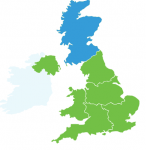Sign up to our newsletter Subscribe
Analysing Global Immunisation Expenditure

Sign up to our newsletter Subscribe


New health care technologies often improve health but also increase costs. Judging whether they are good value for money involves comparing what QALYs are gained from new technologies, compared to what QALYs could be gained by using those same resources…

New health care technologies often improve health but also increase costs. Judging whether they are good value for money involves comparing what QALYs are gained from new technologies, compared to what QALYs could be gained by using those same resources elsewhere in the NHS. This “opportunity cost” is the key consideration behind NICE’s cost effectiveness threshold.

New health care technologies often improve health but also increase costs. Judging whether they are good value for money involves comparing what QALYs are gained from new technologies, compared to what QALYs could be gained by using those same resources elsewhere in the NHS. This “opportunity cost” is the key consideration behind NICE’s cost effectiveness threshold. The value of this threshold is of great importance, especially given the Government’s desire to move towards “value based” pricing of new medicines in the future.
The threshold may be thought of as the incremental cost per QALY gained from the least cost-effective treatment that is currently funded in the NHS. Therefore, one approach to estimating it is to identify services at the margin and their cost-effectiveness.
In collaboration with Dr Andrew Walker of the University of Glasgow, an OHE team comprising Jon Sussex, Sarah Karlsberg Schaffer and Nancy Devlin, has begun research aimed at estimating the cost-per-QALY threshold in the NHS in Scotland. The research uses a previously-untapped source of data on spending at the margin. Funding is being provided by an unrestricted grant from the UK’s American Pharma Group.
Scotland is divided into 14 geographical NHS Boards that are responsible for both the commissioning and provision of health services. In 2010 and 2012, each NHS Board was required to respond to a survey from the Health and Sport Committee of the Scottish Parliament. Boards were asked which incremental service developments they were able to fund at the margin for the coming year. The purpose was to identify planned marginal spending. Another question asked the Boards to list areas where spending has been reduced. Our work will use this information, along with published cost-effectiveness evidence, to quantify the revealed marginal cost per QALY in the NHS in Scotland.
The study also aims to gather information on the factors driving NHS Boards’ expenditure decisions at the margin, and the role of cost-per-QALY evidence in them.
While the data in this study relate specifically to Scotland, the evidence and the conclusions drawn from it will be of interest to the whole of the UK, given the similarities in the funding of the health care systems, the services they provide and the populations they cover.
For more information, contact Jon Sussex at OHE.
An error has occurred, please try again later.
This website uses cookies so that we can provide you with the best user experience possible. Cookie information is stored in your browser and performs functions such as recognising you when you return to our website and helping our team to understand which sections of the website you find most interesting and useful.
Strictly Necessary Cookie should be enabled at all times so that we can save your preferences for cookie settings.
If you disable this cookie, we will not be able to save your preferences. This means that every time you visit this website you will need to enable or disable cookies again.
This website uses Google Analytics to collect anonymous information such as the number of visitors to the site, and the most popular pages.
Keeping this cookie enabled helps us to improve our website.
Please enable Strictly Necessary Cookies first so that we can save your preferences!